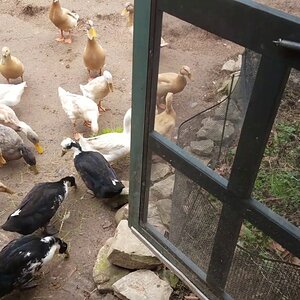- May 15, 2015
- 14
- 14
- 79
Hello! I have been reading some of the fodder articles and blogs and would like to try this for my chickens. I live in Iowa and there will be no greenery for my free-range hens for several months! It seems fairly straight forward - but how much fodder should I try to grow for twenty-six chickens? I see people using cake-pan-sized trays or standard dish-pan sized trays, but I can't find any reference to how many hens that would feed or how often that amount should be provided per hen per week or whatever? I do realize the fodder should not be their only food by any means, but how much should I provide as a supplement?
I'm excited to try this! Please advise me as to what has been beneficial for your flock?
I'm excited to try this! Please advise me as to what has been beneficial for your flock?



